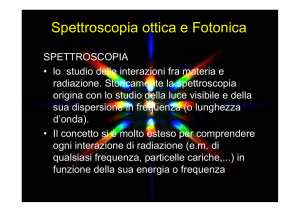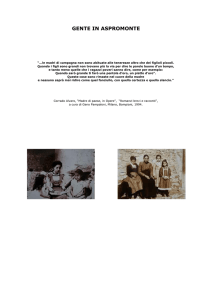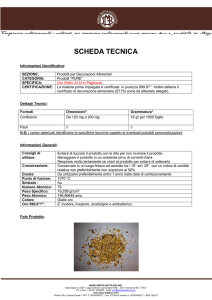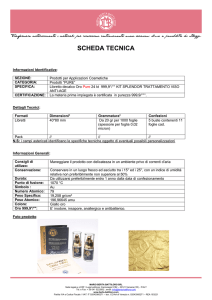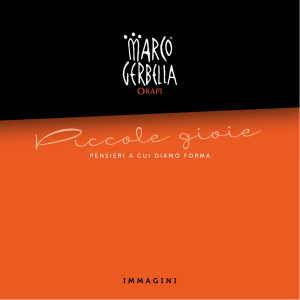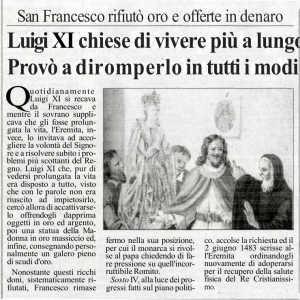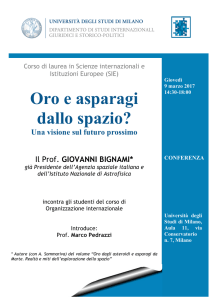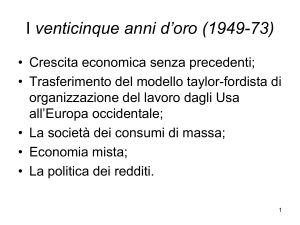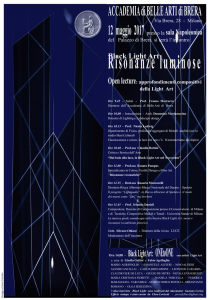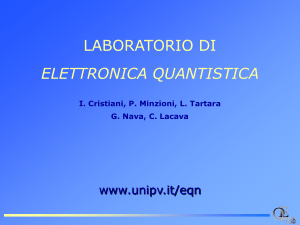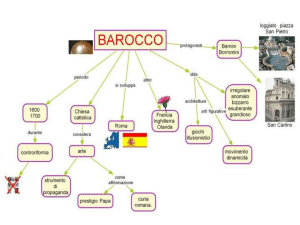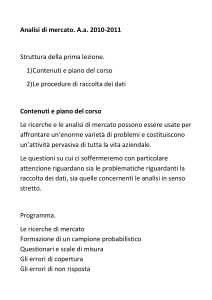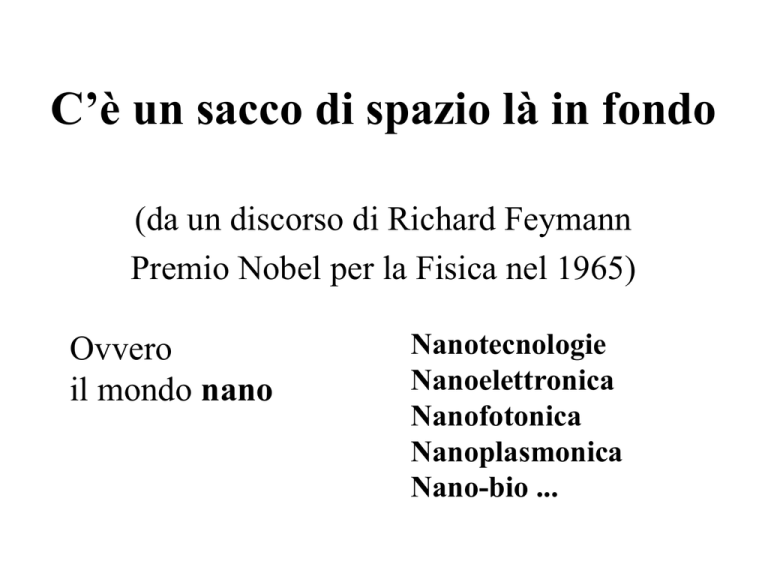
C’è un sacco di spazio là in fondo
(da un discorso di Richard Feymann
Premio Nobel per la Fisica nel 1965)
Ovvero
il mondo nano
Nanotecnologie
Nanoelettronica
Nanofotonica
Nanoplasmonica
Nano-bio ...
There's Plenty of Room at the Bottom
An Invitation to Enter a New Field of Physics
the classic talk that Richard Feynman gave on December 29th 1959 at
the annual meeting of the American Physical Society at Caltech
“This field ... is more like solid-state physics in the
by Richard P. Feynman
sense that it might tell us much of great interest about
the strange phenomena that occur in complex
situations.”
“... the final question as to whether, ultimately---in the great
future---we can arrange the atoms the way we want; the very
atoms, all the way down!”
“What would the properties of materials be if we could really
arrange the atoms the way we want them?
... we will get an enormously greater range of possible
properties that substances can have, and of different things
that we can do.”
I super-reticoli di Esaki
Al
Ga
Ga As
As
Leo Esaki
Nobel 1973
TASC-Trieste
Diodo a effetto tunnel
Resistenza differenziale
negativa
Una nuova generazione di LASER
LASER a pozzi quantici
Al
Ga
Ga As
As
Alferov Kroemer
Nobel 2000
• Emissione alla frequenza desiderata
• Alta efficienza
Controllo di proprietà dei materiali
+ loro interazione con la luce =
PHOTONIC
TRANSISTORS
L.E.D.
SENSORS
PHOTOVOLTAIC
CELLS
Fotonica e spettroscopia ottica
• SPETTROSCOPIA
• the study of the interaction between matter
and radiated energy. Historically,
Spectroscopy originated through the study
of visible light dispersed according to
its wavelenght.
• The concept was greatly expanded to
comprise any interaction with radiative energy
as a function of its wavelength or frequency.
Nanostrutture elettroniche e fotoniche
Confinamento degli elettroni:
quantum dots di semiconduttore
InAs/GaA
sQDs
Controllo dell’interazione
radiazione-materia, modifica
dell’emissione spontanea, laser a
bassa soglia
Confinamento della luce:
cavità a cristallo fotonico
Controllare la luce
Dr. Michele Belotti
Immagini di strutture ottenute
per litografia da fascio
elettronico e etching su SOI
(Silicon On Insulator)
Fotonica e spettroscopia ottica
• FOTONICA
• The science of photonics includes the
generation, emission, transmission,
modulation, signal processing,
switching, amplification,
and detection/sensing of light.
• The term photonics thereby emphasizes that
photons are neither particles nor waves —
they have both particle and wave nature.
Fotonica e spettroscopia ottica
si correla con
• PLASMONICA
• a plasmon is a quantum of plasma oscillation
like a collective oscillation of the free electron
gas density.
• Plasmonics takes advantage of the
coupling of light to charges like
electrons in metals, and allows breaking
the diffraction limit for the localization
of light into subwavelength dimensions
enabling strong field enhancements. Fotonica e spettroscopia ottica
si correla con
• Photonics also relates to the emerging
science of quantum information in
those cases where it employs photonic
methods.
Silicon Photonics
Motivation: Information and Communication Technology (ICT) is still based
on integrated electronic circuits, but increases in their power consumption and
heat generation are now hampering further improvements in the speed and
capacity of ICT and also hindering the realization of the ‘Green Internet’
New approach: using light (photons) to move huge amounts of data at very
high speeds with extremely low power over a thin optical fiber rather than
using electrical signals over a copper cable
Moving data with silicon and light
Research: light emission in silicon
Use a photonic crystal (PhC) cavity to realize
an efficient and integrated light source in silicon
• Electrically driven
• Operates CW at room T
• Exhibits a narrow linewidth
• Emits in the telecom window
• Is small (µm-sized)
• Operates at low power
Signal Intensity (a.u.)
All-optical switching in cristalli fotonici:
verso il transistor ottico
0.6
pump
0.4
0.2
Silicon PhC
cavity
Transmission (dB)
0.0
0
ON
ON
-5
-10
-15
-5
probe
OFF
λ = 1.4 µ m
0
5
10
15
20
Time (ns)
Tempo di switching: < 2 ns
Collaborazione con CNRS-CEA-LETI (Grenoble)
I biosensori
Un biosensore è un dispositivo che permette di rilevare
interazioni chimiche o biologiche.
Stimolazione
Elettrochimico
Enzimi
Antigeni
Anticorpi
Recettori
Microrganismi
Cellule
Ottico
Calorimetrico
Acustico
Piezoelettrico
Campione
Mediatore
biologico
Detezione
Lettura e analisi
del segnale
Trasduttore di
segnale
Nei biosensori ottici la stimolazione e/o trasduzione del segnale sono ottiche.
Alcuni vantaggi dei biosensori ottici
• Selettività
• Misure in tempo reale
• Configurazioni compatte
• Misure in vivo poco invasive
• Detezione multiparametrica
• Basso costo
Che cosa si può rilevare?
Cellula
Atomo
Proteina
~ 10-10m ~ 10-9-10-7m
Virus
Procariota
Eucariota
~ 10-8-10-7m
~ 10-7-10-6m
~ 10-5-10-4m
• Grande ampiezza di scala (10-10m - 10-4m e
oltre)
• Differenti proprietà fisiche
• Differenti concentrazioni
Applicazioni
• Ambientale
• Biotecnologico
• Farmaceutico
• Biomedico
• Alimentare
Onde di superficie
Analita
Ligando
Le onde di superficie sono modi confinati all’interfaccia
tra due mezzi differenti.
ε1> 0
ε m< 0
Bloch Surface Wave
Plasmon
Nanodispositivo fotonico-plasmonico
• Cavità a cristallo fotonico in Si3N4
• Nanoantenna ogivale di Pt/Au a risonanza plasmonica
• Funzionalizzazione e scattering Raman
⇒ risoluzione spettroscopica nanometrica
⇒ sensibilità a poche molecole (10-100)
Collaborazione con Università della Magna Graecia (Catanzaro)
Superfici nanostrutturate per bio-sensori
Superficie con nanopillars di acido acrilico immersi in un film di oro
Acido
acrilico
Au
polistirene
Acido acrilico è in grado di legare biomolecole; film di oro supporta
plasmoni di superficie –> biosensore che sfrutta lo spostamento della
risonanza plasmonica
Collaborazione con JRC-ISPRA, European Commission
Superfici plasmoniche
Cilindri
Matrice
dielettrici metallica
Anello
di oro
RISPOSTA OTTICA
MODI PLASMONICI + MODI PLASMONICI
LOCALIZZATI
DELOCALIZZATI
Cilindri dielettrici
Interfaccia oro/vetro e
oro/aria
Plasmone oro/aria
Plasmone oro/vetro
l=2
l=1
La riflettanza misurata dal substrato è
sensibile a variazioni di indice all’interfaccia
libera della superficie plasmonica.
TYPICAL EXPERIMENT
Typical Experiment
INJECTION
sample
INJECTION
regeneration solution
dissociation
association
Baseline
chip
chip
chip
chip
Ready for a new cycle:
baseline/injection
Analyte (sample)
Ligand
Chemistry
SPR signal
27
Spot-by-spot sensograms.
Kinetics and quantification
BSA spots
Gentamicin
spots
Specific Detection
Array Synthesis
anti-FLAG
10ug/mL
regeneration
FLAG
iNPX = 15.000 spots
reverse FLAG
(negative)
iNPX Progress in Instrumentation
Portability, from 50Kg to 5 Kg
Ci sono più cose in cielo e in terra
di quante ne possa sognare la tua filosofia
(dall’ “Amleto” di Shakespeare)
A chi il compito di scoprirle ?

